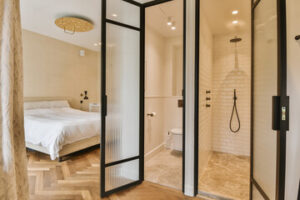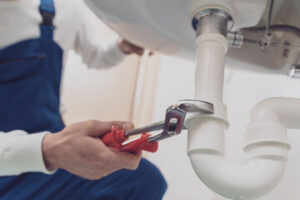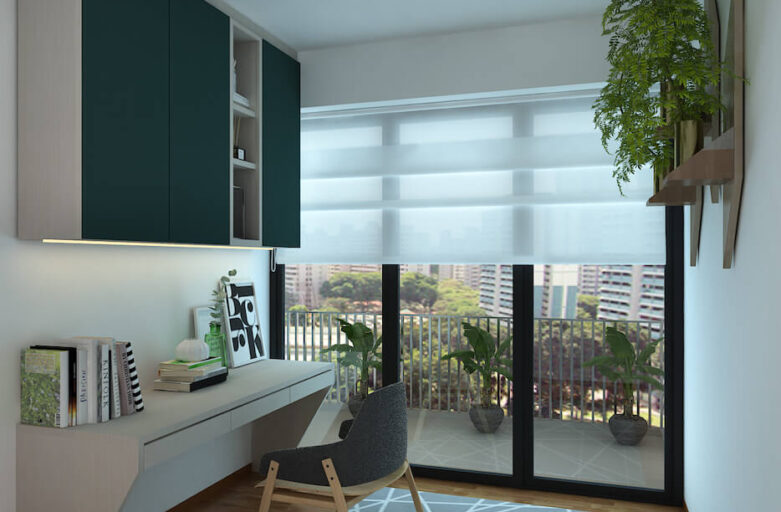Shower Doors are available in several types and styles to suit a wide range of homeowner preferences and requirements. Some of the most popular shower door options are:

Clear glass is a popular choice because it allows natural light into the shower and matches any bathroom color palette. Etched and patterned textures obscure the view for privacy. Tempered glass is tough and can withstand daily wear and tear. When it does break, it crumbles into small pieces instead of sharp shards.
The bathroom is one of the most popular areas for homeowners to focus their remodeling budgets. It’s a space that we use every day and it can really help to make your home more welcoming, attractive and functional. There are a lot of different ways you can update this room and one popular choice is to install new shower doors. But which ones do you choose – framed or frameless?
Frameless shower doors are a more modern option that offer a sleeker look. They’re often made of tempered glass and come in a variety of thicknesses and colors to suit any décor. They’re more expensive than framed shower doors though and require specialized hinges that are usually custom-made for each installation.
Since they don’t have any metal frames, these doors are less likely to corrode over time. They’re also easier to clean as there are no nooks and crannies for dirt and mildew to collect. However, they can be more difficult to keep completely water-tight.
A framed door is more likely to have a track at the bottom that can collect mineral deposits and contribute to corrosion over time. This can also create an environment that’s perfect for the growth of mold and mildew. Framed doors are also less likely to be treated with Diamon Fusion, which helps prevent the buildup of soap scum and water spots on the glass.
Although it’s rare, frameless doors have been known to shatter. This is usually due to damage or defects in the glass, improper installation or severe or abrupt changes in temperature or humidity. The good news is that tempered glass is designed to break into thousands of tiny pebbles, which reduces the risk of injury from jagged shards.
If you choose to go with a frameless shower, it’s important to work with a professional company that specializes in this type of installation. They’ll be able to offer you a wide selection of glass options and will know how to properly install them so that they can last for decades.
While frameless showers are more beautiful and easier to clean, they’re also a little more dangerous than framed showers. If the glass does break, it can cause serious injury if it falls on you. To minimize the risk, be sure to check your doors regularly for signs of wear and tear and never slam or swing them shut. You should also be careful not to place any sharp objects near the glass or use them to support yourself while showering. By following these simple tips, you can help to ensure that your frameless glass shower doors stay safe and beautiful for years to come.
Framed
If you’re on a budget or want a more traditional look, framed doors might be the best fit. They are less expensive than frameless and can still be customized to your shower, although they tend to have a shorter lifespan than their more contemporary counterparts. Framed doors have metal framing around their edges, panels, tops and corners that are generally made of aluminum. The metal framing helps keep water from seeping under the door or onto the bathroom floor, but it can also create a heavier barrier that can cause more frequent and more severe leaks than a completely glass enclosure.
They are also more prone to corrosion from the constant exposure to moisture and can have a harder time keeping clean than their frameless counterparts. The metal frames can collect mineral deposits, leading to the growth of mold and mildew, and are more likely to require squeegeeing after each use. Additionally, they only open outward and can be a hazard for children or people with limited mobility.
Despite their drawbacks, framed shower doors offer some advantages that should be considered as well. Since framed showers typically have thicker panes of glass, they can provide a more spacious feeling in the bathroom. Additionally, framed showers can be customized to your specific dimensions and are available in a variety of configurations including sliding, bi-fold, neo-angle, or hinged doors.
While they are a more durable and affordable option, the metal framing on framed shower doors can become more prone to leaks over time, especially in older homes or with poor installation. Additionally, the caulking used to create the water-tight seal may fail, and the weight of the metal framing can make framed showers more prone to leaking at the joints and in the corners.
A popular alternative to framed shower doors is the semi-frameless style. This type of shower offers the benefits of a framed shower with a cleaner, more minimalist design. They are typically a little more expensive than framed doors, but they are still considerably less costly than fully frameless showers and can be custom fitted to your opening. Like framed showers, semi-frameless options are available in a wide range of styles and can be configured with sliding, pivot or hinged doors.




